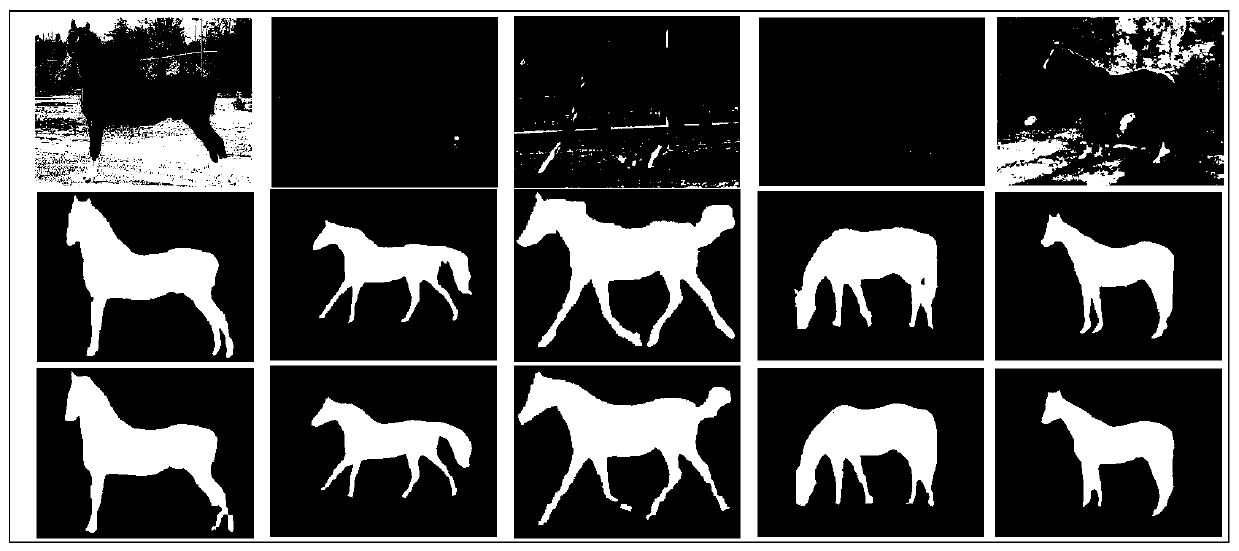An image semantic segmentation method based on deep learning
A semantic segmentation and deep learning technology, applied in the field of computer vision and deep learning, can solve the problems of insufficient use of image local feature information and global context dependencies, rough edges of image segmentation, and missing local features, etc., to improve the generalization ability. , adding richness and precise border effects
- Summary
- Abstract
- Description
- Claims
- Application Information
AI Technical Summary
Problems solved by technology
Method used
Image
Examples
Embodiment 1
[0042] The WeizmannHorse dataset is an image segmentation dataset consisting of 328 images. Some images in the dataset are as follows: image 3 As shown, the training of the network model uses the Pytorch platform, and the code is written on python. This embodiment is based on the image semantic segmentation method of deep learning, such as figure 1 As shown, the steps are as follows:
[0043] S1. Data set processing
[0044] Randomly select 200 images from the WeizmannHorse dataset as a training image set, and the remaining 128 images as a test image set, and perform data enhancement operations on the training image set to increase the number of training images to 11,000;
[0045] S2. Build a deep semantic segmentation network
[0046] The deep semantic segmentation network consists of a parallel deep neural network module, a feature fusion module, and a Softmax classification layer. The parallel deep neural network module is used to extract features from the input image, a...
Embodiment 2
[0077] The StanfordBackground dataset is an image segmentation dataset consisting of 715 images. Some images in the dataset are as follows: Figure 4 As shown, the training of the network model uses the Pytorch platform, and the code is written in python.
[0078]This embodiment is based on the image semantic segmentation method of deep learning. In step S1, 573 images are randomly selected from the StanfordBackground data set as a training image set, and the remaining 142 images are used as a test image set, and the data enhancement operation is performed on the training image set. The number of training images is increased to 13,752; in step S32, the size of the image in the training image set after data enhancement is cut to 421×421, and the training image is used to train the deep semantic segmentation network to generate a pixel category prediction label probability distribution map, The prediction loss is calculated using the predicted label probability and the original ...
PUM
 Login to View More
Login to View More Abstract
Description
Claims
Application Information
 Login to View More
Login to View More - R&D
- Intellectual Property
- Life Sciences
- Materials
- Tech Scout
- Unparalleled Data Quality
- Higher Quality Content
- 60% Fewer Hallucinations
Browse by: Latest US Patents, China's latest patents, Technical Efficacy Thesaurus, Application Domain, Technology Topic, Popular Technical Reports.
© 2025 PatSnap. All rights reserved.Legal|Privacy policy|Modern Slavery Act Transparency Statement|Sitemap|About US| Contact US: help@patsnap.com



